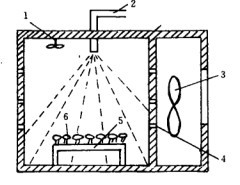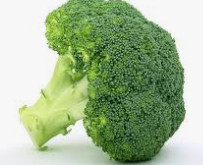
- Shandong Microwave Machinery Co.,Ltd.
- To be the Leader of microwave drying and edible oil refining equipments Manufacturer
Home> Company News> Effect of microwave drying on sulfur content of radish in different parts of broccoli
- AddressNo. 225, Huangqiao Village, Beiyuan, Tianqiao District, Jinan, Shandong, China
- Factory AddressNo. 225, Huangqiao Village, Beiyuan, Tianqiao District, Jinan, Shandong, China
- Phone(Working Time)+86 0531 85064681
- Phone(Nonworking Time)0086-15020017267
- Fax+ 86 0531 85064682
Effect of microwave drying on sulfur content of radish in different parts of broccoli
2019-01-12 09:18:40
Absrtact: Using broccoli as raw material, the sulfur content of radish in three different parts of broccoli flower, stem and leaf was determined by high performance liquid chromatography (HPLC). The differences of sulfur content in samples obtained by microwave drying equipment (microwave power 900 W, time 10 min) and electric blast drying (drying temperature 90 C, time 2 h) were compared and analyzed. The effect of microwave drying on sulfur content in broccoli was studied.
The results showed that the order of sulfur content in different parts of broccoli dried by microwave was stem, flower and leaf, which were (152.50 + 0.27), (82.75 + 1.28) and (23.72 + 0.18) mg/kg, respectively. The sulfur content in broccoli stems was about 2 times and 7 times higher than that in flowers and leaves, respectively. The sulfur content in different parts of broccoli dried by electric blast was also about 2 times and 7 times higher than that in stems. The highest was (156.32 (+1.37) mg/kg), and the highest was (85.04 (+1.13) mg/kg and (53.26 (+2.78) mg/kg in flowers and leaves, respectively.
Compared with electrothermal blast drying, microwave drying had a greater effect on sulfur content in broccoli leaves, but had little effect on stems and flowers. Broccoli leaves should be dried by electric blast drying. Stems and flowers can be dried by microwave drying or electric blast drying.
Key words: microwave drying broccoli; different parts; sulfur radish

Broccoli, also known as broccoli, is a cruciferous cabbage vegetable. It has been found that both seeds and plants contain thioglycosides, which can be hydrolyzed by endogenous enzymes to obtain isothiocyanates. Among them, sulforaphane (1-isothiocyanate-4-methyl sulfonyl butane) has attracted the most attention. It has strong anti-cancer effect, preventive effect on breast cancer, rectal cancer and gastric cancer, and pharmacological effects such as anti-bacterial, anti-oxidation and immunity.
As the strongest anticancer substance found in cruciferous vegetables, sulforaphane has a high content in broccoli, so people often eat broccoli to prevent cancer and cancer, cardiovascular and cerebrovascular diseases and digestive system diseases. In addition, sulforaphane extracted from plant enzymatic hydrolysis has no obvious adverse effects on human body, and it has high research value and market prospects.
Microwave heating of vegetables has been widely studied and applied in food industry in recent years due to its advantages of time saving, hygiene, convenience, energy saving and less nutritional loss. Due to the vigorous breathing of broccoli after harvest, the buds wilt, chlorosis and yellowing, mildew and other phenomena occur in 2-3 days at normal temperature, resulting in the decrease of nutrient composition and antioxidant capacity. At present, microwave drying on broccoli has not been reported.
The analytical methods of sulfur radish include high performance liquid chromatography (HPLC), gas chromatography (GC), gas chromatography-mass spectrometry (GC-MS), and high performance liquid chromatography (HPLC) has been proved to be an effective method for the determination of sulfur radish in broccoli, which can destroy sulfur radish and other nutrients due to overheating. In this paper, broccoli was used as raw material, and the sulfur content of radish was determined by HPLC. The effect of microwave drying on sulfur content in broccoli flowers, stems and leaves was studied. At the same time, the effect of different drying methods on the sulfur content of broccoli was compared with that of electric heating blast drying, in order to provide reference for the comprehensive development and utilization of broccoli rich in sulfur.
 High efficiency food beverage factory stone paper production line
High efficiency food beverage factory stone paper production line Factory price Fully automatic Machine PP/PS Plastic Sheet Production Line
Factory price Fully automatic Machine PP/PS Plastic Sheet Production Line used deformered bar rolling mill production line
used deformered bar rolling mill production line Manufacturing plant automatic factory puffed sticky rice cracker production line
Manufacturing plant automatic factory puffed sticky rice cracker production line Production Line Pp Ppr Plastic Pipe Making Machine 20-63mm Multi-layer Extrusion Production Line For Water Supply
Production Line Pp Ppr Plastic Pipe Making Machine 20-63mm Multi-layer Extrusion Production Line For Water Supply